1,000 GB: Three Samsung TB Drives
Samsung Spinpoint F, RAID, EcoGreen
Samsung currently offers three different drive families that are suitable for desktop PCs. The first is the Spinpoint F1, which is a mainstream desktop hard drive available at capacities up to 1 TB. The second model is the Spinpoint F RAID, which is very much the same product, optimized for 24/7 operation and better durability. Finally, the EcoGreen F is a low-power hard drive, which is in fact a different product designed to achieve better power efficiency.
Desktop Mainstream: Samsung Spinpoint F, HD103UJ
We reviewed the initial Spinpoint F1 at 1 TB capacity almost one year ago. However, our recent terabyte hard drive comparison revealed that the Samsung drive still does well despite the latest competition from Hitachi and Western Digital. This was the first 7,200 RPM hard drive that stored a full one terabyte capacity on only three platters. Knowing that Seagate is about to ship its new 1.5 TB Barracuda 7200.11 drive, Samsung could theoretically have assembled a 1.5 TB drive months ago if it wanted.
The Spinpoint F family is available at various capacity points, where the 320 GB, 640 GB and 1,000 GB models make most sense, as they utilize full platters to store data. All higher-end drives at 750 GB and up come with a 32 MB cache memory. All Spinpoint F models are based on Serial ATA/300 interfaces and include Native Command Queuing (NQC). The drive’s seek time isn’t exciting, but the drive provides solid application performance and high throughput.
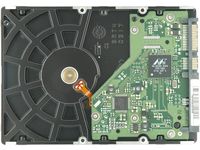
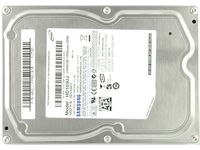
Business: Samsung Spinpoint F RAID, HE103UJ
Samsung’s Spinpoint F RAID edition does not differ much from the standard desktop version. It has similar specs of 7,200 RPM, 32 MB cache, SATA/300 with NCQ and various capacity points between 160 GB and 1,000 GB. It comes with a slightly higher price tag and with a doubled MTBF rating (1.2 million hours instead of 600,000 hours) to underline reliability, and also has increased power consumption. Performance was different from the other two Samsung models, since the drive wasn’t optimized for quiet seeks, just for maximum performance. Hence the RAID edition clearly is the fastest Spinpoint F drive you can get, reaching almost 120 MB/s throughput.
The Spinpoint F RAID comes with a five-year factory warranty, which we consider important not only for this high-end category of desktop hard drives. The operating environment specifications, however, aren’t different.
Get Tom's Hardware's best news and in-depth reviews, straight to your inbox.
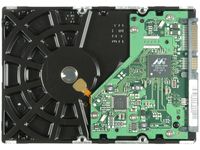

Efficiency: Samsung EcoGreen F, HD103UI
The EcoGreen F drive family is fundamentally different from the other two. It has the same SATA/300 interface with NCQ, the same 32 MB cache memory, and the same environmental specifications, but it only spins at 5,400 RPM, which is the reason for the decreased power requirements. As a consequence, access time is a bit longer, and the throughput is limited to 86 MB/s maximum. This is roughly at the same level of WD’s Caviar Green drive, which operates on a similar basis.
However, the access time difference is actually small enough to have the EcoGreen F drive be the clear winner in our workstation I/O performance per watt benchmark. The power consumption decreases from around 7 W with the two other drives to only 4.3 W, which also makes a noticeable difference in the surface temperature test. The other models level off at a 115°F (46°) surface temperature after hours of idling, while the EcoGreen F stays at cooler 102°F (39°F). In addition, the EcoGreen F is noticeably quieter, and so very suitable for living room PCs, which you don’t want to notice.
Please also look at the article Energy-Saving Hard Drives, which compares the WD Caviar Green and the Hitachi P7K500 low-power drive.
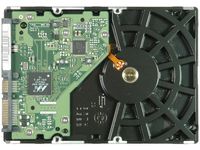
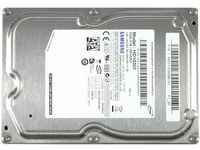
Current page: Samsung Spinpoint F, RAID, EcoGreen
Prev Page Eco? Should You Care? Next Page Drive Comparison Table and Test Setup

